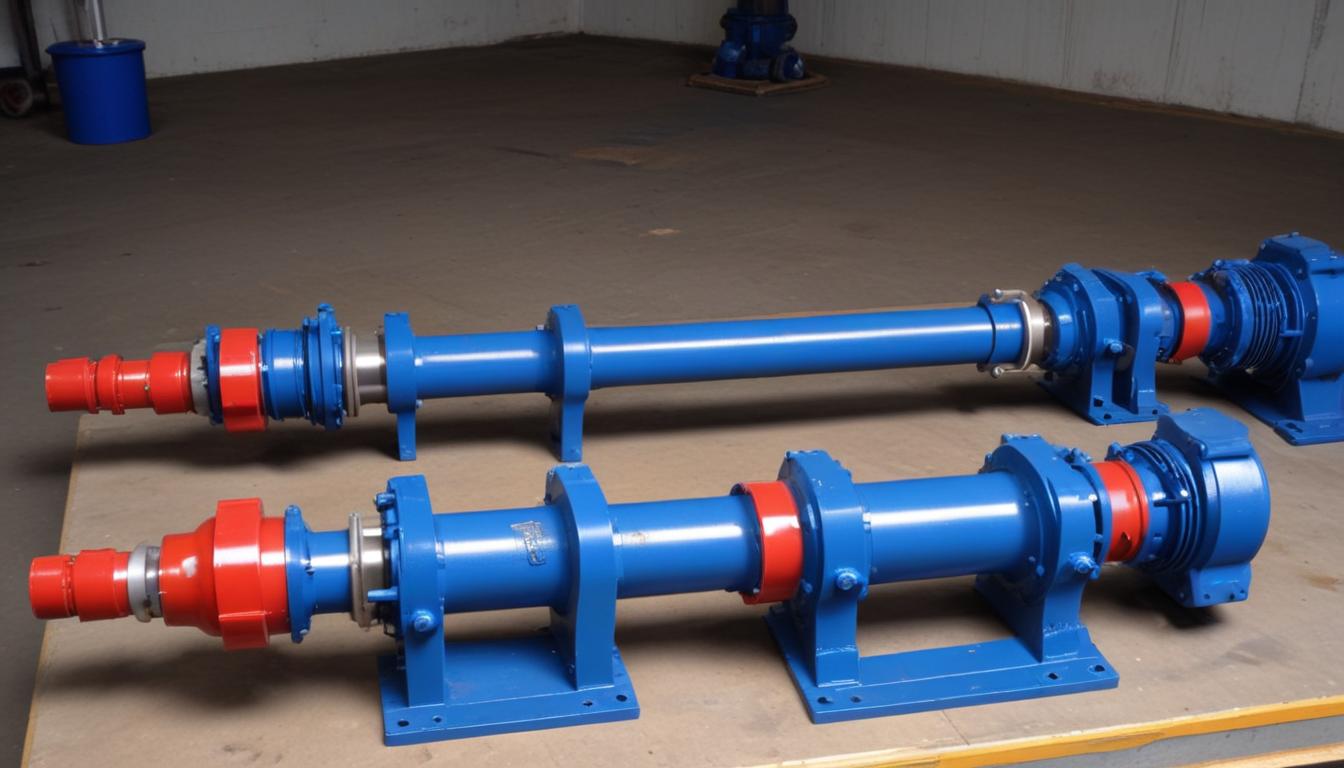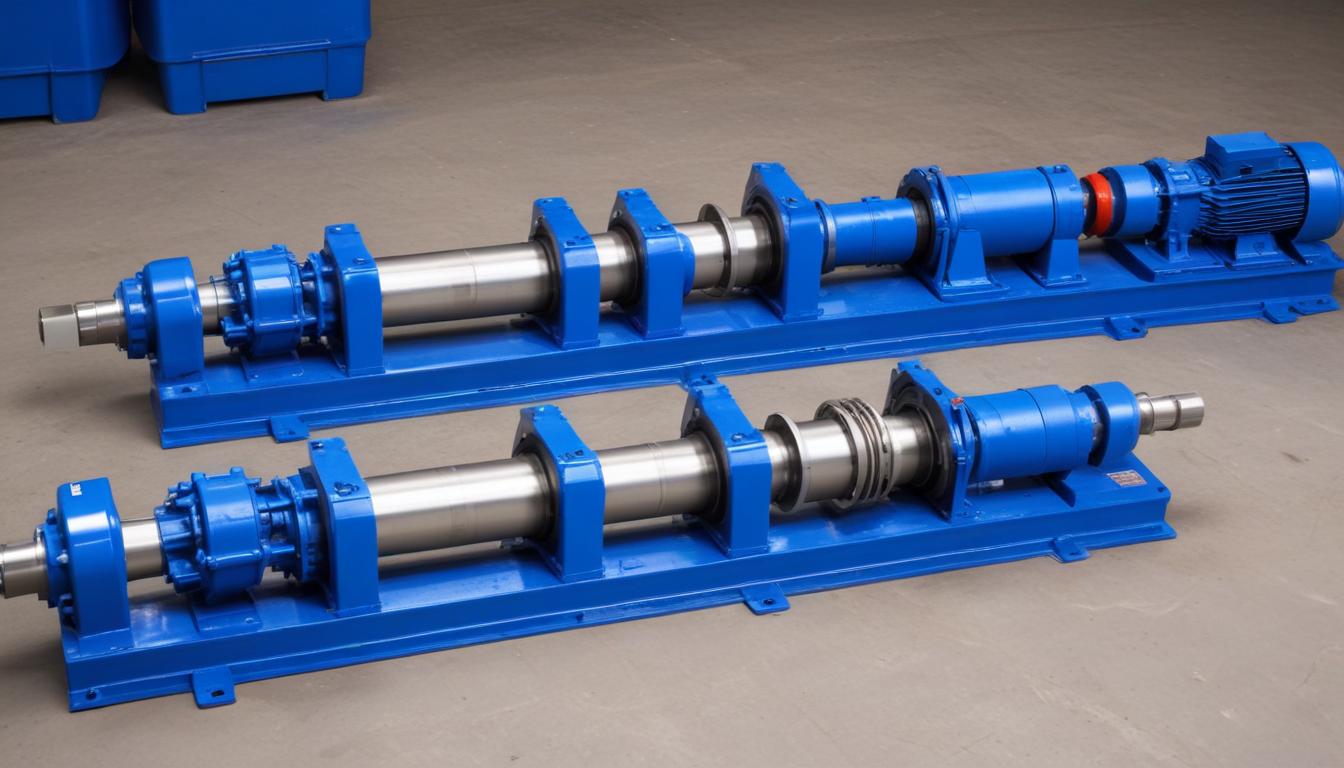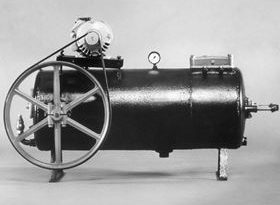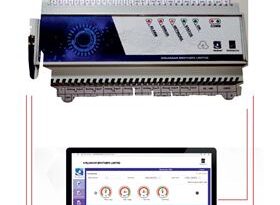Double helix vs single helix progressive cavity pumps explained
When comparing the double helix and single helix progressive cavity pumps, it is essential to understand the fundamental design and operational features that distinguish these two types of pumps. Both pump designs utilize a rotor and stator arrangement that facilitates the movement of fluids through a cavity, but they do so in markedly different ways.
The double helix design features two screws that operate in synchronization, which allows for a more balanced operation. The dual helical rotor configuration minimizes pulsation and increases efficiency in transferring fluids, making it suitable for various applications that require consistent flow. Conversely, the single helix configuration employs a single helical rotor that interacts with a stator, creating a series of cavities that transport media from the inlet to the outlet. This design can potentially lead to increased wear over time due to higher shear rates.
In terms of operational efficiency, double helix progressive cavity pumps are often favored in viscosity-sensitive applications, as they can handle a wider variety of fluids with greater effectiveness. On the other hand, single helix pumps may be more straightforward in design and operation, offering ease of maintenance and lower initial costs. Each type of pump has its unique features that make it suitable for specific applications.
| Feature | Double Helix | Single Helix |
|---|---|---|
| Efficiency | Higher, with lower pulsation | Moderate, with potential for increased shear |
| Wear Rate | Lower, due to balanced operation | Higher, potential for more rapid wear |
| Complexity | More complex | Less complex |
Choosing between the double helix and single helix progressive cavity pumps largely depends on application requirements, fluid characteristics, and operational parameters. Each design offers unique advantages that can significantly impact overall pump performance in different industrial scenarios.
Understanding progressive cavity pumps
Progressive cavity pumps are a type of positive displacement pump widely used in various industries for their ability to handle challenging fluids. Understanding the operational mechanism of these pumps is crucial for engineers and users to select the right pump for specific applications. At the core of progressive cavity pumps lies a helical rotor that rotates inside a stationary stator, creating distinct cavities that facilitate the movement of fluid. As the rotor turns, these cavities progress from the inlet to the outlet, effectively conveying the fluid with minimal turbulence and shear stress.
In the case of double helix progressive cavity pumps, the dual-rotor design enhances fluid dynamics and leads to more uniform flow. This design reduces pulsation and provides higher efficiency while handling viscous and shear-sensitive fluids, making it particularly effective in industries such as food processing, pharmaceuticals, and chemical manufacturing. Alternatively, single helix pumps utilize a singular rotor design that, while simpler, can result in increased shear rates, which may limit their use in certain applications, particularly those involving sensitive or high-viscosity fluids.
While both designs operate on the same basic principles, their configuration impacts their behavior under varying conditions. Factors such as fluid viscosity, temperature, pressure, and the presence of solids all play a critical role in determining which pump design is most effective. For instance, the double helix configuration allows for a more balanced operation, making it suitable for applications requiring high reliability and consistent flow rates.
- Smooth Operation: The double helix design minimizes pulsation, providing smoother flow compared to the single helix configuration.
- Maintenance: Single helix pumps typically require less maintenance due to their simpler design, but it’s crucial to account for potentially higher wear rates.
- Viscosity Handling: Double helix pumps excel at handling a wider range of fluid viscosities, which can be beneficial in complex processing systems.
Engineers should carefully evaluate the characteristics of the fluids being pumped and the specific requirements of their applications to make an informed choice between double helix and single helix progressive cavity pumps. Understanding operational efficiencies and design differences can lead to better performance, reduced operational costs, and greater longevity of the pumping systems.
Design differences between double helix and single helix

The principal distinction between the double helix and single helix progressive cavity pumps lies in their design architecture, which directly influences their operational characteristics and suitability for various applications. The double helix design incorporates two intertwined rotors, working in tandem within an elastomeric stator. This configuration allows for more balanced fluid dynamics, as both rotors engage the stator simultaneously. The result is an even distribution of wear, reduced pulsation, and enhanced flow consistency across a range of operational conditions.
In contrast, the single helix pump operates with a solitary rotor that rotates within the stator to create a series of progressive cavities. This simplicity in design contributes to easier manufacturing and potentially lower costs; however, it can also lead to increased shear stress on fluid media. This is particularly pertinent when pumping shear-sensitive substances. Without the additional rotor, the single helix design may encounter more pronounced fluctuations in output, translating to less stable flow characteristics.
- Mechanical Complexity: The dual rotor mechanism in double helix pumps introduces additional mechanical components, which can necessitate more precise engineering and maintenance protocols. This includes a need for careful alignment and balance during installation and operation to avoid unnecessary wear.
- Fluid Shear and Viscosity: The design of double helix pumps enables them to handle a broader spectrum of viscosities efficiently, making them more adaptable in applications involving thick or sticky fluids, while single helix pumps may limit operational effectiveness under similar conditions.
- Flow Rate Uniformity: Since double helix pumps mitigate pulsation effects, they are exceptionally suited for processes requiring a steady flow over extended periods, such as in chemical processing or water treatment, contrasting with the inherent variability in flow rates presented by single helix pumps.
Furthermore, the potential for improved maintenance intervals with double helix pumps stems from their balanced wear characteristics. The synchronous action of the dual rotors reduces the risk of localized wear on the stator, which is a common failure point in single helix pumps. While the single helical design is often easier to repair, users must be vigilant about wear patterns and possible maintenance more frequently due to its less forgiving nature on sensitive fluids.
Ultimately, understanding the intrinsic design differences between double helix and single helix progressive cavity pumps is crucial for engineers and pump users. Each design offers distinct advantages and limitations that can decisively affect operational efficiency, fluid handling capabilities, and maintenance strategies across various industrial applications.
Advantages of double helix pumps

The double helix progressive cavity pumps present several advantages that make them a robust choice for various industrial applications. One of the primary benefits is their higher efficiency. Due to the synchronized operation of the dual rotors, these pumps deliver a more steady flow with significantly reduced pulsation. This feature is crucial in processes where consistent fluid delivery is essential, such as in chemical manufacturing and food processing.
Moreover, the design of double helix pumps allows for excellent handling of viscous fluids. The capability to manage a wider range of viscosities with ease makes them ideal for applications involving thick or shear-sensitive materials. This versatility is particularly beneficial in industries like cosmetics, pharmaceuticals, and wastewater treatment where different fluids must be processed without compromising their integrity.
Another noteworthy advantage is the reduced wear rate. The dual rotor configuration equally distributes the operational stress across both rotors and the stator, leading to lower rates of wear compared to single helix pumps. This characteristic translates into extended service life and lower maintenance costs, as the likelihood of premature failure is minimized.
In terms of maintenance, while double helix pumps are mechanically more complex, this complexity can be advantageous. With proper alignment and maintenance practices, the pumps’ components can be kept in optimal condition, reducing downtime and enhancing overall system reliability. Their balanced operation mitigates the common issue of localized wear, which is often found in single helix designs.
- Energy Efficiency: The synchronous nature of double helix pumps lowers energy consumption compared to traditional pump designs, making them a more sustainable option in operations.
- Noise Reduction: The smoother flow and reduced pulsation contribute to lower operational noise levels, which is an important factor in environments where noise pollution must be minimized.
- Optimal Flow Control: Double helix pumps maintain better control over flow rates, allowing for precise dosage and effective management of the pumping process, critical in many engineering applications.
With these advantages in mind, engineers and pump users are encouraged to assess the specific requirements of their applications carefully. The integrated benefits of double helix progressive cavity pumps make them an attractive option for users seeking reliability, efficiency, and versatility in fluid handling operations.
Applications of single helix pumps

Single helix pumps have versatile applications across various industries due to their distinctive design and operational capabilities. These pumps are particularly advantageous for processes involving low to moderate viscosity fluids, making them ideal for a range of tasks in sectors such as wastewater treatment, food and beverage production, and chemical processing. The application versatility stems from their ability to handle slurries, sludges, and even delicate compounds, providing reliable performance in fluid transport.
In the wastewater treatment industry, single helix pumps are typically employed to transport sewage and waste slurries. Their capacity to manage solid-laden fluids effectively makes them essential components in both municipal and industrial wastewater facilities. The single helix design enables these pumps to overcome the challenges presented by viscous waste, ensuring continuous operation with minimal maintenance downtime.
Within the food and beverage sector, single helix pumps are frequently utilized for transferring products like ketchup, sauces, and creams. These pumps can gently handle sensitive food ingredients without causing excessive shear that could alter their texture or properties. The simplicity of the single helix design also facilitates ease of cleaning and compliance with sanitary standards, which is critical in food processing.
Another prominent application of single helix pumps is in chemical processing, where they are capable of handling various corrosive and viscous chemicals. Their straightforward design allows for less complex maintenance requirements, which can be beneficial in plants undergoing frequent process changes or where high throughput is essential. By selecting single helix pumps for these applications, engineers can ensure reliable performance while minimizing operational costs.
- Water Treatment: Efficiently convey wastewater and manage solids for effective treatment processes.
- Food Processing: Ideal for the gentle handling of sensitive food products, preventing shear damage.
- Chemical Delivery: Suitable for the transfer of various chemicals, enhancing reliability in production.
The range of applications demonstrates the efficacy and reliability of single helix pumps. Their ability to handle diverse fluid types, combined with simpler maintenance needs, positions them as an advantageous choice for engineers seeking efficient solutions in fluid transport across multiple industries.
Maintenance and troubleshooting considerations

Maintaining the performance and reliability of progressive cavity pumps is crucial for ensuring optimal operation, especially when distinguishing between double helix and single helix designs. Regular maintenance plays a significant role in prolonging the lifespan of these pumps and preventing unplanned downtime, which can lead to costly production delays.
Routine inspection should include the following key areas:
- Stator and Rotor Condition: Regularly check for signs of wear or damage on both the stator and rotor. In double helix pumps, ensure that both rotors maintain proper alignment and that wear is uniform. For single helix pumps, inspect the rotor for scoring or degradation, which can lead to increased fluid shear rates and performance issues.
- Seals and Gaskets: Examine all seals and gaskets for leaks or deterioration. These components are critical for maintaining pressure and preventing fluid loss. In both designs, replace any damaged or worn seals promptly to avoid efficiency losses.
- Lubrication Systems: Ensure that lubrication systems are functioning properly to reduce friction and wear on the rotor and stator. This is particularly important for double helix pumps, where lubrication can help optimize the interaction between the dual rotors.
Troubleshooting common issues in progressive cavity pumps requires knowledge of the specific design in use:
- Pulsation Issues: If a double helix pump experiences pulsation, it may indicate imbalanced rotors or issues with the drive mechanism. Conducting a detailed inspection of the drive components can help assess and resolve this issue.
- Reduced Flow Rate: For single helix pumps, reduced flow could signal blockages in the inlet or outlet, or increased wear on the rotor. Check for any obstruction and evaluate the rotor’s condition to ensure it is operating correctly.
- Increased Noise Levels: Any abnormal noises, such as grinding, should be investigated promptly, as they can indicate mechanical failure or misalignment. In double helix pumps, misalignment of the dual rotors can lead to vibration and noise, necessitating realignment and possibly replacement of components.
Training maintenance personnel on the specific needs of double helix and single helix progressive cavity pumps is invaluable. Understanding the unique operational characteristics and requirements of each pump type will enable engineers to implement effective maintenance strategies, ultimately enhancing reliability and efficiency in fluid management applications.




